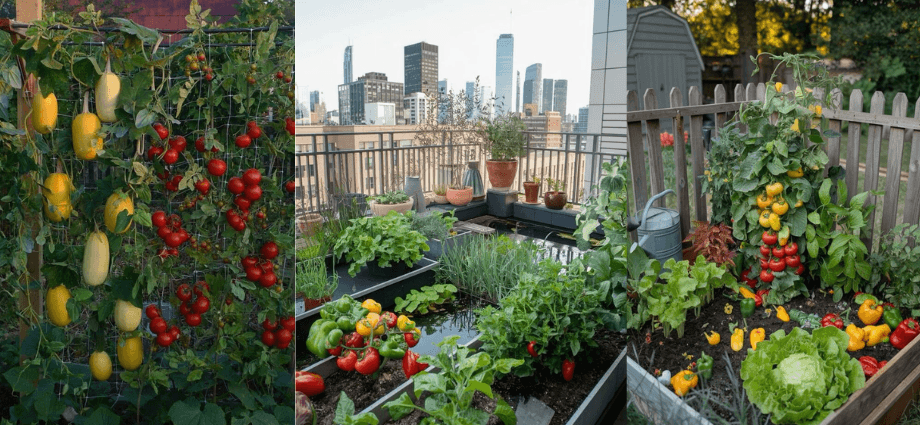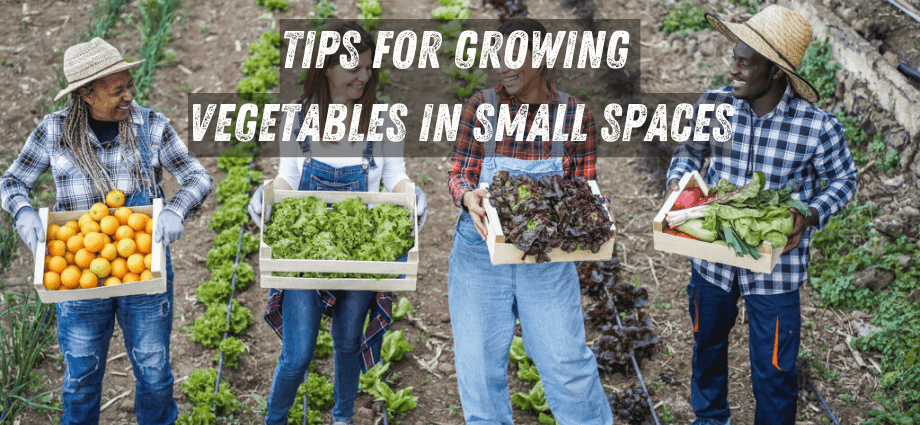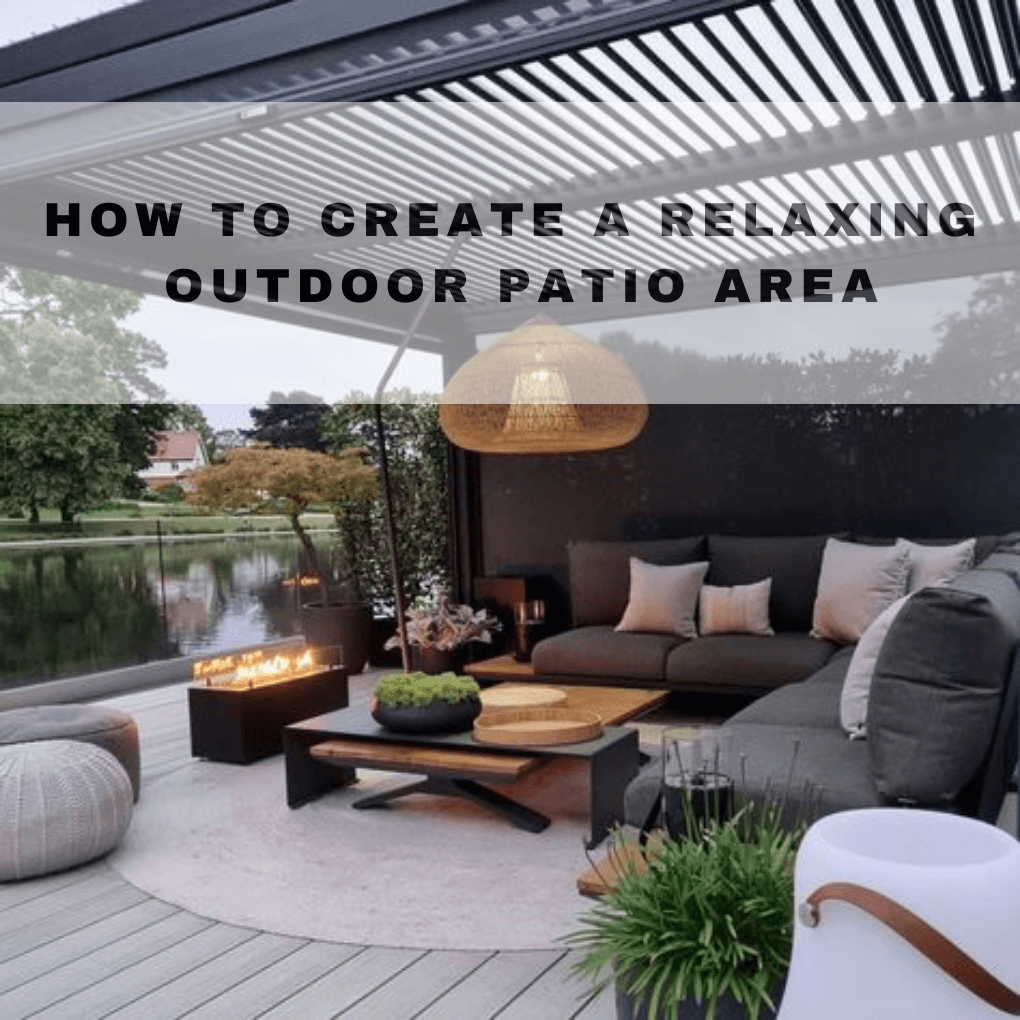Growing your own vegetables in a small space may seem challenging, but it’s absolutely possible with the right planning and techniques. Whether you have a small apartment, a balcony, or a tiny backyard, you can still enjoy the benefits of fresh, homegrown produce. By utilizing some smart strategies, anyone can grow their own vegetables in even the most compact spaces. In this article, we’ll provide practical tips to help you grow vegetables in small spaces, making the most of every inch, even if you’re new to gardening.
Choose the Right Vegetables for Small Spaces
Selecting the right vegetables is crucial when you’re limited by space. Some vegetables thrive in small areas, while others need more room to spread out. By choosing the right plants, you can maximize your space and still enjoy a variety of fresh veggies.
Best Vegetables for Containers
Certain vegetables are perfect for growing in containers, which is ideal for small spaces. Lettuce, spinach, radishes, and herbs like basil and parsley do well in containers. These plants don’t need a lot of space to grow and are perfect for pots, planters, or grow bags. Containers also allow for better control over soil quality and make it easier to move your plants around if needed. If you’re limited on space, container gardening is your best friend. You can keep multiple pots in one spot, or place them on windowsills, making it easy to grow a variety of vegetables without taking up too much space.
Vegetables for Vertical Gardens
Vertical gardening is an excellent solution when growing in small spaces. By using vertical structures, such as trellises or shelves, you can grow climbing vegetables that don’t need a lot of ground space. Climbing beans and peas, tomatoes (small or dwarf varieties), and cucumbers or squash (compact types) are all great choices for vertical gardens. Vertical gardens can be set up on balconies, patios, or even inside by windows. These vegetables use upward growth to conserve horizontal space, making them perfect for smaller gardens. Vertical gardening also adds aesthetic value, creating a green, lush environment in places where horizontal space is limited.
Maximize Your Space with Smart Planting Techniques

Maximizing space is key when gardening in small areas. Smart planting methods can help you grow more vegetables without taking up too much room. One great way to do this is through container gardening. You can use various containers, like pots or buckets, to grow your plants. Make sure the containers have drainage holes to avoid waterlogging. Grouping containers together can help save space and create a more organized garden. Also, make sure to choose the right soil for containers to ensure your plants get the nutrients they need. In addition, regularly check that your plants are not overcrowded, as this can hinder their growth. Proper spacing within containers allows for better airflow and healthier roots.
Another technique is companion planting, where you grow vegetables that benefit each other when planted together. For example, tomatoes grow well with basil, and carrots can be planted with onions to keep pests away. By planting compatible vegetables side by side, you can make the most of your space while promoting healthy plant growth. Additionally, companion planting can help with pest control, reducing the need for harmful chemicals.
Optimize Sunlight and Watering
Vegetables need proper sunlight and watering to grow well. Make sure to place your plants in the sunniest spots available, as most vegetables require at least six hours of sunlight each day. If your space is limited, consider rotating pots to ensure they get enough light. For areas with partial shade, try planting vegetables like leafy greens, which can thrive with less sunlight. Even in small spaces, positioning your plants for maximum sunlight can make a big difference in their growth. Balconies, rooftops, or window sills are all great places to get the light your vegetables need.
Watering is equally important. Too much or too little water can harm plants. To conserve water and ensure your plants are properly watered, consider using a drip irrigation system or self-watering containers. Water your plants early in the morning to reduce water loss from evaporation and help them absorb moisture more effectively. Over-watering is a common issue for gardeners in small spaces, so make sure your containers have proper drainage and always check that the soil is moist, not soggy. If you are growing plants indoors, you might also consider using moisture meters to gauge when it’s time to water.
Keep Your Garden Healthy and Productive
To ensure your small garden stays healthy and productive, regular maintenance is necessary. With the right care, your plants will grow strong, and you’ll enjoy a bountiful harvest.
Pest Control Without Chemicals
One of the main challenges when gardening in small spaces is dealing with pests. However, you can control pests naturally without using harmful chemicals. Here are some organic methods:
- Use neem oil or insecticidal soap to repel pests without harming your plants.
- Introduce beneficial insects like ladybugs, which eat harmful pests like aphids.
- Create physical barriers, such as row covers, to protect your plants from insects.
By using natural pest control methods, you can avoid the negative impacts of chemical pesticides, which can harm the environment and pollinators. Regularly inspecting your plants for pests, especially in a confined space, will help prevent infestations from spreading. Also, keep an eye on any signs of damage so that you can take action early.
Pruning and Harvesting Tips
Pruning is an essential part of maintaining healthy plants. It encourages better airflow, removes dead or damaged leaves, and helps plants grow stronger. Here are some pruning and harvesting tips:
- Regularly prune tomato plants to remove suckers and promote better fruit production.
- Harvest leafy greens and herbs early to encourage new growth.
- Cut back flowering plants when they stop producing to extend the growing season.
Proper pruning and timely harvesting can increase the productivity of your plants and keep them healthy throughout the growing season. Harvesting at the right time ensures that your vegetables have the best flavor and that your plants continue to produce.
Conclusion
Growing vegetables in small spaces is a rewarding and achievable goal. With the right choices, techniques, and care, you can create a productive garden in even the tiniest areas. Whether you choose container gardening, vertical gardening, or smart planting methods, you can enjoy the benefits of fresh, homegrown vegetables. Start small, be patient, and enjoy the process of watching your garden grow!




